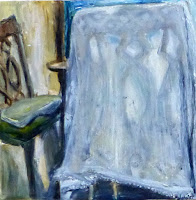Recently I was at my book club complaining that for the past several months the local paper has delivered my newspaper to my driveway instead of my doorstep. I made countless phone calls. I then sent several letters protesting deficiencies in both delivery and customer service to the head of the newspaper and the Circulation department before I finally cancelled the newspaper delivery. My letter offered these words among many.
"It is my preference to receive a paper copy and if you are trying to wean your customers off paper by lousy service, you are succeeding. It would be simpler if you just said so instead of testing my patience.”
As I shared my frustration at book club, I realized that apparently written protests are not the norm. It is not that I expect action to occur although I am ever hopeful it will. It is perhaps an optimism that pushes me to action as well as a sense of responsibility. How can they fix it if I don’t call it to their attention? At least then I’ve done my part.
My history of protests began early. My mother kept albums of news articles on everyone in my family. Surprisingly we all had our share. Our family got a lot of ink. As I went through the albums I was amused to see that she had clipped out an article from the 1970s when I sought the disciplining of a judge who had commented on a rape victim’s attire as a contributing factor. I had been outraged and immediately sent a letter to the judicial group, parts of which were quoted in the paper. My mother apparently considered the content noteworthy enough to clip and file.
It is not a bad talent to have, although those on the receiving end may think otherwise. My step-daughter once harnessed this ability when she had shutters designed for her windows that didn’t fit properly. Initially turned down when she protested, she asked me to write a letter. I used the company’s own words and promises against them and they readily gave her what she asked when their inconsistency glared at them from print. It is so satisfying when written words meet with success!
 I come by this proclivity naturally. My father was a protest writer. When I went through his files after he died, I found many letters he had written protesting failings in products. He was adept at using humor to soften his underlying edge. There was the No No Feeder which was a bird feeder that my father understood to be shaped so squirrels could not get to the bird food. His letter termed it the Yes Yes Squirrel Feeder as his acrobatic squirrels were amazingly adept at gaining access. He developed a lengthy and amusing thread with his correspondent on this topic who advised him it actually meant no wood or plastic.
I come by this proclivity naturally. My father was a protest writer. When I went through his files after he died, I found many letters he had written protesting failings in products. He was adept at using humor to soften his underlying edge. There was the No No Feeder which was a bird feeder that my father understood to be shaped so squirrels could not get to the bird food. His letter termed it the Yes Yes Squirrel Feeder as his acrobatic squirrels were amazingly adept at gaining access. He developed a lengthy and amusing thread with his correspondent on this topic who advised him it actually meant no wood or plastic.He had a less humorous and more edgy protest letter to an insurer, a letter on a badly designed garbage bag and when they discontinued one of his Entenmann pastry favorites, he again wrote in protest. As I went through family records, I retained those that seemed to capture the essence of the person. I found myself saving my father's protest letters. They were so him.
It is often these seemingly minor characteristics that define us, a feistiness and indignation that the world does not behave the way it should and a willingness to throw ourselves into the fray. Perhaps someday someone will save my protests too.











